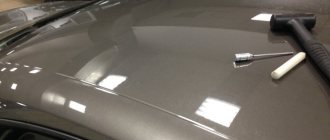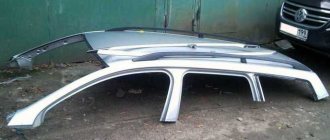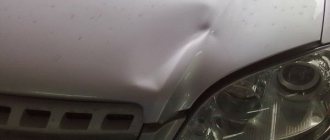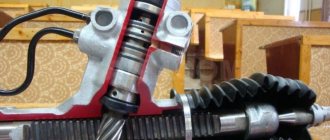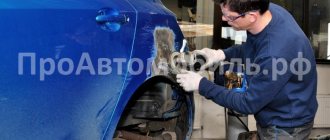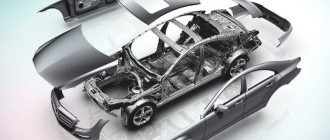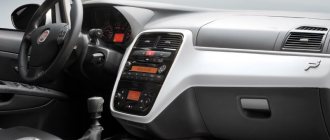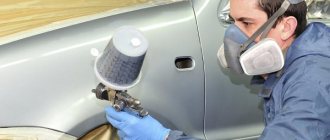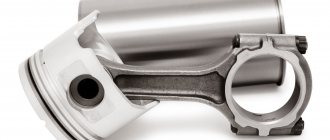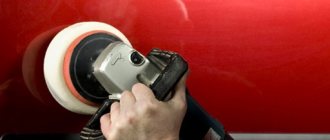Damage to the car body is always painful for vehicle owners. Not only is the car damaged, but it also entails considerable material costs.
Therefore, drivers are trying to have in their arsenal essential items that will allow them to repair their cars themselves and save money. One of the indispensable tools is PDR – Paintless Dent Repair. This is a unique equipment that allows you to repair a dent on the body.
PDR technology: what is a PDR tool and what is it for?
In other words, if there is damage on the surface, but the paintwork has not been deformed, you can safely use the tool.
Basic moments
In the modern world, a PDR tool is used to repair car damage without deforming the paintwork. It allows you to quickly and efficiently return the car to its presentation, as well as eliminate imperfections of any car model. The operating principle of the tool is based on the vacuum method, thanks to which the presentability of the machine is restored in a matter of minutes.
The use of the tool is relevant when a car collides with buildings, another vehicle or a pole; during impacts or hail. PDR is not afraid of dents of various shapes and sizes.
If, when damaged, the paintwork has retained its original appearance, then repairing the body will not be difficult. Otherwise, the use of PDR is useless. The tool is based on many types of steel (from 8 or more). You can purchase products on the car market with a variety of characteristics.
Principle of technology
Repairing dents on a car body is carried out in two ways: from the inside or from the outside. PDR technology allows you to remove damage of any complexity.
To influence the dent from the inside, “hooks” are used, which have different configurations and shapes. The work is carried out according to the principle of leverage - the deformed area is affected from the inside.
As a rule, repairs do not require removing the casing or damaged part. The process is carried out through a technological hole. Accordingly, the surface must be brought to its original condition. The process ends with surface treatment. This can be done using cores or polishing the body.
With glue
Sometimes it is impossible to carry out work from the inside, then the process is carried out from the outside. In this case, the adhesive method of exposure is used. Using hot-melt adhesive, pistons of various shapes and sizes are glued.
Using a special hammer or lifter, the dent is pulled out using the pistons. Upon completion of the process, the hot melt adhesive is removed with a special solution. This method allows you to pull out the entire dent or most of its area.
For successful work, you should carefully calculate where to glue the caps. A master who has previously performed this type of work will help with this.
Preparatory stage
All work that the car owner does on his own must be carefully thought through and prepared for. First, you should carefully examine the damaged area in a lighted place. It is important to inspect the paintwork: it should not be damaged!
How to understand that the use of traffic regulations is impossible? The following factors should be taken into account:
- Damage to paintwork.
- Old casing.
- Carrying out work is impossible from the inside.
- The previous processing was performed poorly.
- The presence of a strong metal crease.
If the above problems have passed the car owner, then he can safely repair the PDR with a tool.
What tools will you need?
Without special tools and lighting, it will be impossible to perform work using PDR. For better visibility of damage, contrast lighting with parallel lines is used.
It allows you to examine the smallest details of the dent relief. If the surface is slightly damaged, using a portable option is acceptable. Otherwise, the lighting should cover the entire wall.
The main tools when repairing a car using PDR are:
- Reverse hammer.
- Fungi of different sizes.
- High strength polymer minilifter.
- Glue sticks.
- Scraper and heat gun.
- Kern.
- Primer or solvent for hot melt adhesive removal.
The car owner can purchase a ready-made kit for removing dents.
Dent Repair Kit
The PDR set consists of special tools made from different types of alloys with high strength. The glue used is from the manufacturer. It does not damage the paintwork, is easy to remove and has a high level of adhesion. Each kit comes with instructions that you should read carefully.
Straightening process
First you need to provide free access to the inside of the machine. You need to remove everything unnecessary: trim, mirrors, handles, etc. Once the surface of the car is “free,” you can begin the repair.
A special “lamp” is installed on the surface. As a rule, it is included in the kit:
Lamp from PDR kit
Next, the lever of optimal length is selected. With smooth gradual movements using the selected lever, pressure is applied to the metal from the inside in the area of the dent. This must be done very carefully and gradually so as not to “squeeze” the metal. This is exactly why a special lamp is installed. This way you can clearly see the surface of the car.
Schematically, the repair process can be displayed as follows:
Repair scheme
After the dent has been “squeezed out” upward, the surface should be treated to make it perfectly flat. For this, a special hammer and a plastic cone are used. The damaged surface is tapped. Thus, the metal is completely leveled.
If the dent is large, it is better to carry out such repairs in stages, alternating between working with a lever and a hammer.
After the surface of the car is completely straightened and there are no dents left, you need to carry out the final repair work - put the car in order. This can be done according to the principle of polishing the body.
Lever straightening process
PDR technology: materials and operating instructions
Removing dents without painting is a feasible task thanks to the PDR system. What kind of technology is this? It appeared back in the 70s and 80s, only in those days this operation was considered straightening. And this method began to be used systematically when new metallic varnishes and paints appeared in the auto industry.
The coatings became very durable and quite flexible, which allowed them to withstand even serious damage to car parts. The craftsmen of that time quickly realized that when performing the usual manipulations of straightening the same dents, the paint did not crack, but retained its unchanged appearance.
It was this observation that gave rise to PDR technology. Paintless dent removal (PDR) is a modern alternative method of straightening with further painting. It seems that the method is very simple and anyone can do it in their own garage.
However, not all so simple. The master, millimeter by millimeter, using a special tool, removes the dent from the inside of the part. Bright directional light is very important in this process. The work requires jeweler's precision and accuracy.
Paintless Dent Removal Tool
The modern market offers an impressive variety of different dent removal kits; each device in them should be used only for its intended purpose. Tools for removing dents without painting are produced by both domestic and foreign manufacturers.
Everyone has both advantages and disadvantages. American sets often lack an arch, which will have to be purchased separately to complete the set.
The door tool comes with a standard handle, which leads to some inconvenience, since it is more convenient for the master to use a rotary handle. Domestic manufacturers, when producing PDR tools, focus on power operations, which is usually more relevant in work.
The most convenient door tool to use, it has a rotary rather than a standard handle. By using it, you do not need to change tools frequently, and you can save a lot of money.
Material for making tools and its types
When purchasing a set of PDR tools, first of all you should pay attention to the quality of its manufacture.
Several types of steel are used in production:
- tool chrome plated;
- instrumental stainless;
- instrumental.
Budget ones are made from ordinary tool steel. The steel device, which is coated with layers of chrome, is harder and, accordingly, more wear-resistant. They last longer, but are also more expensive.
Stainless steel is used in the production of premium segment tools. Not broken, not deformed, not susceptible to corrosion under the influence of moisture. PDR tools are divided into basic and special. There are such types of it:
- breaststroke - used for manipulations in cavities;
- door - used if you need to carry out work through the doorway;
- flat – universal, can be used for any type of damage.
Complete sets
Craftsmen themselves decide whether to buy the necessary tools separately or immediately purchase a ready-made kit for removing dents without painting. The undoubted advantage of ready-made kits is that they will cost less than buying each PDR tool separately.
And the tools will fit perfectly and interact with each other. But please note that many sets include many unnecessary or rarely used hooks. And they cost, accordingly, more. Therefore, before purchasing, you should think carefully about what exactly you will need for your work.
Here's what should be included in the optimal kit with standard dent removal equipment:
- hooks (with different diameters, shapes and lengths);
- spacers;
- “fungi” having an adhesive system;
- protective screen;
- straightening hammer;
- lighting device.
To carry out a good car repair, you should take care of good lighting. Everything must be done with pinpoint precision; due attention should be given to this issue, because with a lack of light, minor defects may not be noticed.
To clearly see the depth of the damage, as well as its size, it is recommended to use lamps with diffuse yellow light. They can be mounted either permanently or on special suction cups, which will allow the master to illuminate hard-to-reach places of work.
The final stage
To polish after such repairs without painting you will need:
- abrasive paste;
- fine abrasive
Using a fine abrasive, minor defects are eliminated after leveling. And with the help of an abrasive paste the body is polished, returning the car to its original appearance. Thus, having spent a minimum of time and money on repairs, you can put your vehicle in order with your own hands without painting.
Abrasive body polishing
Is it possible to fix a dent yourself without painting?
It is theoretically possible to do this yourself. But you will need a set of tools, which are expensive and usually not rented. Yes, and you need certain skills in working with the tool, which cannot be obtained from lessons on a video service. When choosing the path to removing dents on your own without painting, pay special attention to training and the ability to use tools. Even body mechanics are forced to take expensive courses to learn how to use the full range of tools.
Other problems may also occur:
- difficulties with access to the necessary elements of the car, this is an important point that needs to be taken into account; you should not undertake repairs if you cannot do a banal disassembly of the door cards;
- incorrect execution of squeezing out a dent, which will result in a hump on the body, and this damage can no longer be eliminated without straightening and subsequent local painting of the part;
- inaccurate extrusion, which will cause damage to the decorative layer of the paintwork, this will lead to additional costs for painting and other restoration procedures;
- ineffective work that will waste your time and force you to spend money on repair work, and this is a really important reason to think about whether it is worth undertaking such a process;
- difficulties in finding a suitable place - you need good lighting, easy access to the hidden cavities of the machine, you often have to use a lift and other means.
As a rule, working on the body yourself does not lead to anything good. In this case, you will end up wasting time, wasting money on tools and materials, and will not achieve satisfaction. Considering the absence of any specific consumables, the service from specialists is inexpensive. Therefore, it is better to find a proven good master and get a convenient service from him. This will save you from potential problems and will help you not to think about trying to fix such damage yourself in the future. You only have to try it once, but you need to find an intelligent master.
Correction with a magnet
Repairing dents on a car without the need for painting using a magnet is one of the easiest ways to restore the surface of parts. For pulling, a magnet is used, which can be purchased at an auto parts store. It has enough strength to straighten small dents. This method removes shallow dents. If the defects are more serious, use another method.
Leveling damage with a magnet on a car is carried out in three stages:
- a cloth is placed between the magnet and the damaged surface to protect the paintwork;
- the magnet is attracted to the edges of the dent and gradually pulls back;
- the tool must be moved around the circle of damage until its central part is reached.
Using a heating-cooling hair dryer
This method of surface restoration is performed using a hair dryer. When exposed to the tool, metal components are heated and cooled, which allows damage to be removed without painting. When carrying out work with a construction hairdryer, it is additionally necessary to use:
- gloves;
- respirator;
- polishes.
An electric tool creates a difference between the overall temperature and the temperature of the working surface. This method ensures straightening of the metal without painting. Heating the dent is done using smooth circular movements with a hairdryer around the perimeter of the damage.
After this, the surface is cooled with compressed air. If the damage is of medium size, then heating must be done in stages in different zones. When the task is completed, the area of the corrected dent is treated with polish. The process does not require painting the restoration area, which is time-consuming and expensive.
Preparation for repair
Body restoration work begins with inspection and classification of damage. This is necessary to select the optimal PDR method for repairs. Defects are conventionally divided into the following types.
- Longitudinal deflections - such damage appears after a tangential impact, for example when a barrier falls.
- Gentle dents are easy-to-remove defects without damaging the paint, usually appearing in the event of contact with an obstacle at low speed or when hitting a stationary vehicle.
- Complex defects - formed on stiffeners after a collision at high speed.
- Sharp dents - in the center of the damage, chipping of the paintwork is usually observed due to impact with a sharp object.
- Volumetric dents - occupy a large area and can include all of the damage listed above.
After classifying the defects, the master determines the material of the body. Aluminum is more difficult to work with, so PDR repairs for this metal are usually more expensive. Then the preliminary cost of repairing the damage is calculated.
Mechanical removal from inside
This method of leveling body dents without painting is usually used within a car service center as it requires certain skills. Mechanical repair of damage from inside the car reduces the risk of paintwork damage to a minimum and in this case painting is not required.
The mechanical method of restoring the surface from the inside is carried out using levers.
Extrusion is carried out due to force on a specific area. To straighten the dent, the tool is inserted under the car body through the nearest technical hole. After this, it is used to apply pressure to the inner surface until a click is heard. It is an indicator that the problem has been solved.
